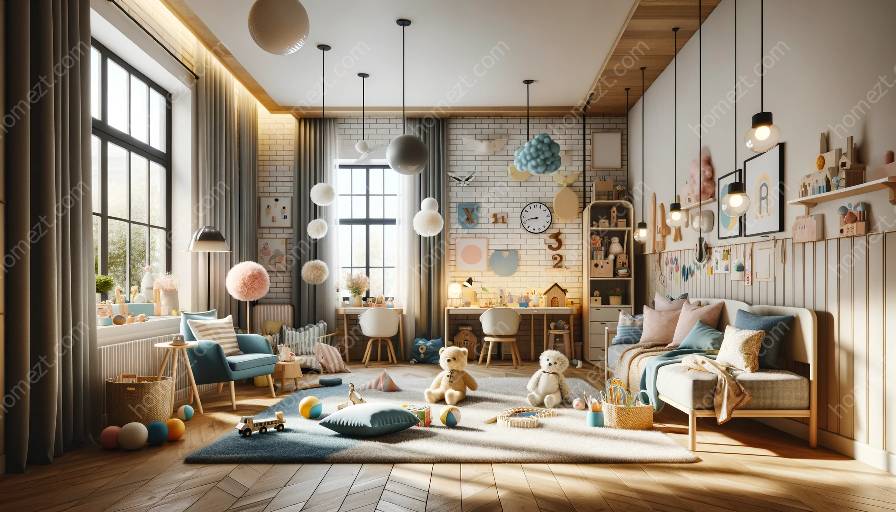Designing a children's room that caters to different age groups and their evolving needs requires a thoughtful approach, considering their physical, emotional, and cognitive development at each stage of childhood. From infancy to adolescence, children's room design should be adaptable, safe, stimulating, and reflective of their individual personalities.
Infants and Toddlers (0-3 years old)
For infants and toddlers, the focus is on creating a nurturing and safe environment that encourages exploration and promotes sensory stimulation. Soft, pastel colors, rounded furniture, and adequate storage for diapers, clothes, and toys are essential. Mobiles, sensory toys, and interactive elements can be incorporated to stimulate their developing senses.
Preschoolers (3-5 years old)
As children transition into preschool age, the room should allow for imaginative play and creativity. Incorporating age-appropriate furniture, such as low-lying shelves for easy access to books and toys, a small table for arts and crafts, and lively, bright colors can enhance their cognitive and creative development.
Elementary School Age (6-11 years old)
As children enter elementary school, their room should accommodate their growing need for independence and organization. Functional and versatile furniture, such as a desk for homework, ample storage for school supplies, and a comfortable reading nook, can support their academic and social development. Personalization through themed decor and customizable elements can reflect their evolving interests.
Adolescents (12-18 years old)
Teenagers require a space that balances privacy, self-expression, and functionality. Flexible and multi-purpose furniture, designated study areas, and technology integration become crucial. A neutral color palette with accent decor that can be easily updated allows for personalization while maintaining a cohesive and mature aesthetic.
Design Tips for All Age Groups
- Flexible Furniture: Utilize furniture that can adapt to different age groups, such as adjustable cribs, convertible beds, and modular storage solutions.
- Safety First: Prioritize safety by securing furniture and fixtures, using non-toxic materials, and implementing child-proofing measures for younger children.
- Zoning: Create designated zones for sleeping, playing, studying, and storage, allowing children to understand and respect the purpose of each area.
- Natural Elements: Integrate natural elements, such as wood, plants, and natural light, to provide a calming and refreshing atmosphere.
- Personalization: Encourage children to express themselves through decor, artwork, and personal items that reflect their unique tastes and interests.
- Growing with the Child: Plan for adaptability and longevity in design, allowing the room to evolve with the child's changing needs and preferences over time.
By understanding the diverse needs of children at different stages of development and implementing thoughtful design strategies, interior designers and parents can create versatile, functional, and appealing spaces that support children's growth and well-being.


























